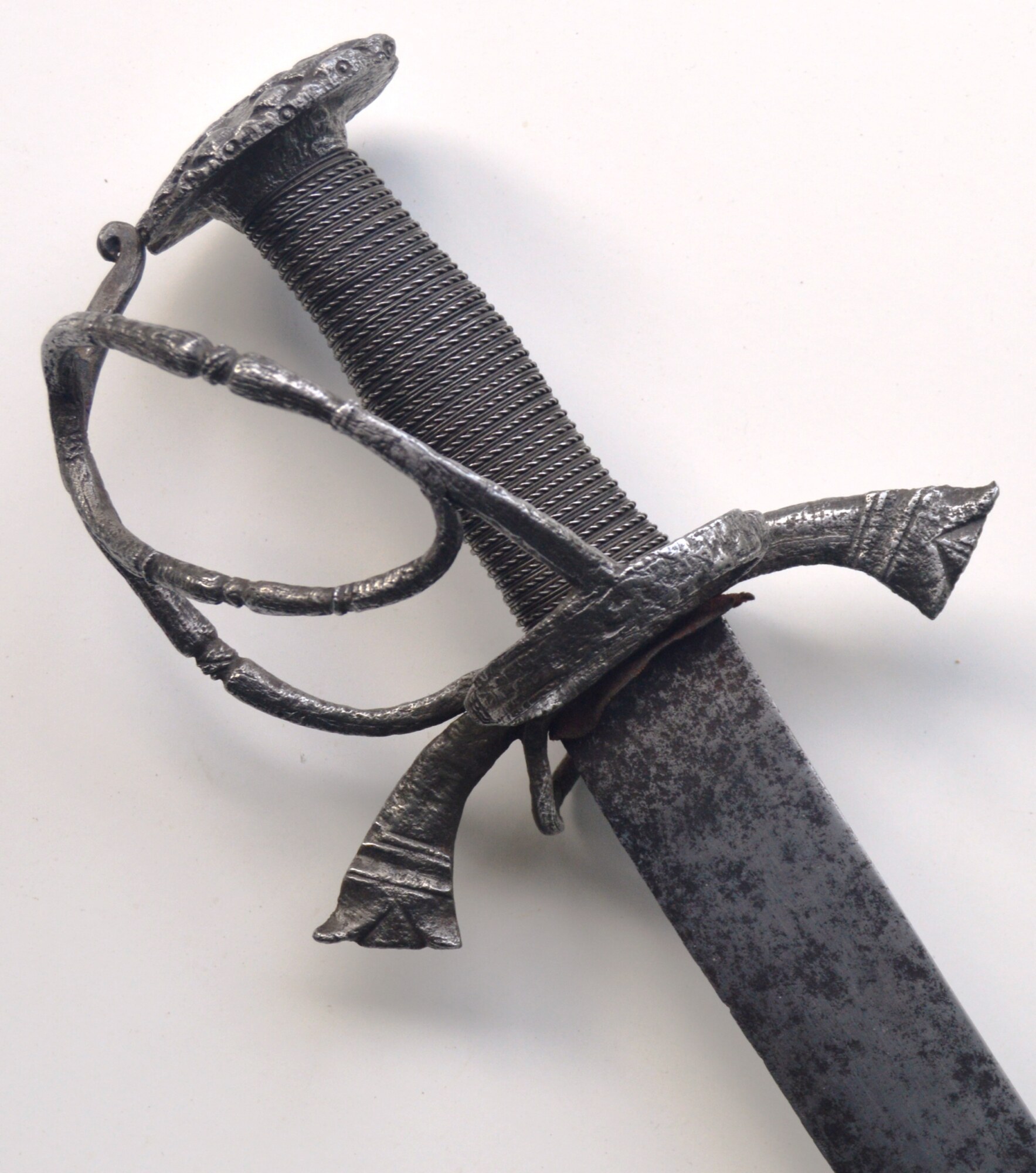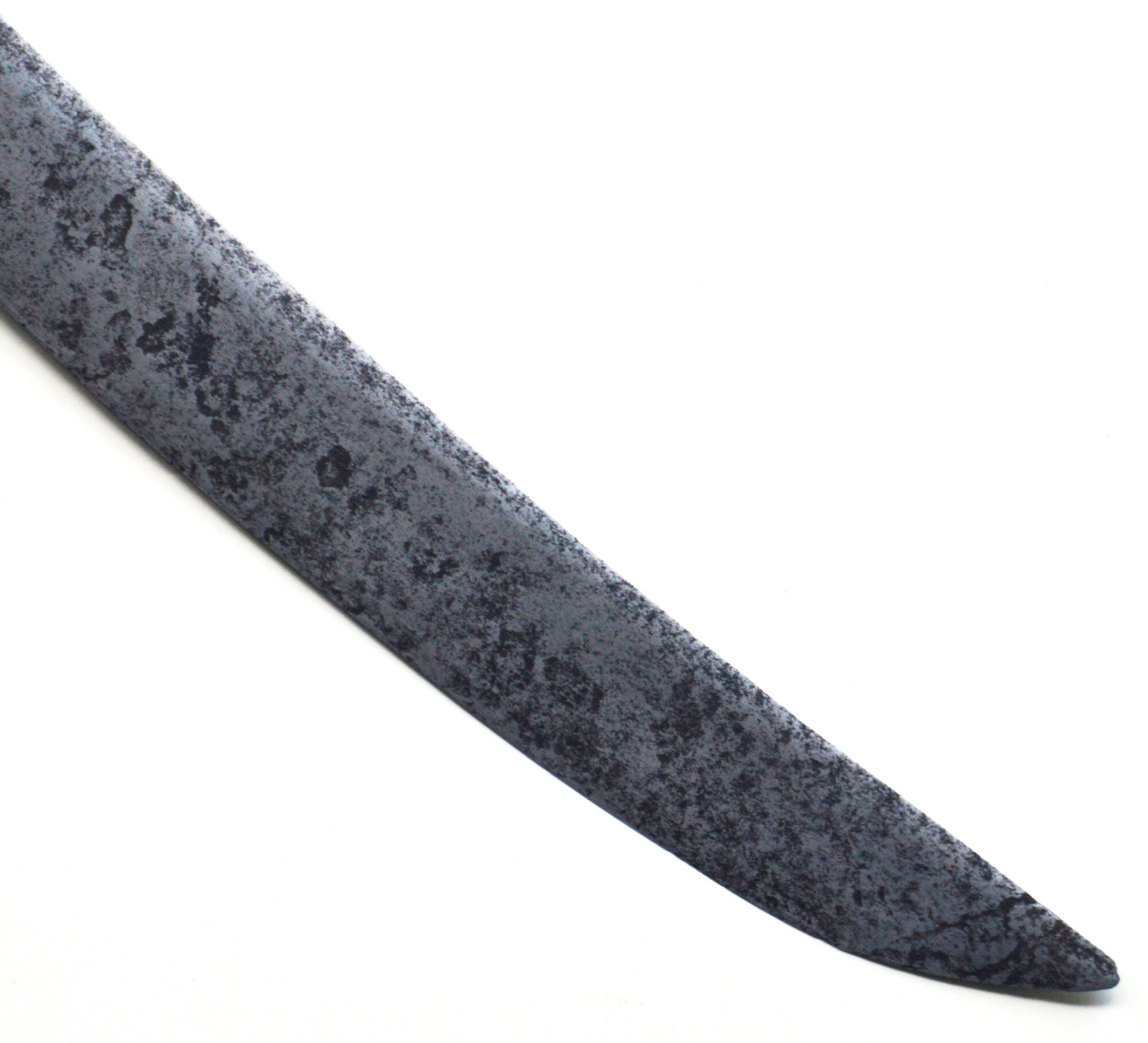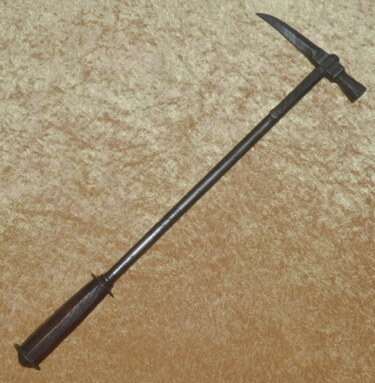Description
The dusegge is a sword with a curved blade unique to Southern Germany, Austria, and
Hungary. The blade is patterned after the blades of the Ottoman Turks, whom they battled
with for centuries. Many of these swords can be found in the arsenals of Austria,
especially Styria, and can be seen today at the Landeszeughaus (state arsenal) Graz, part
of the Steiermarkisches Landesmuseum in Graz, Austria. They were a very effective
slashing weapon favored by light cavalry. In Britain they are sometimes called a “Sinclair
Sabre”, because a group of mercenaries led by Scottish Colonel Sinclair purportedly
carried this type of weapon on their il-fated expedition to Scandinavia. They were
attempting to join the forces of Swedish King Gustavus Adolphus during the Kalmar War in
1612 when they were ambushed and annihilated at the Battle of Kringen in Norway. It is
said that Sinclair was the first to fall. The example offered here features a single-edged
unfullered 31 5/8″ blade, the last 10″ double-edged. The reverse with an interesting and
unique stamped marking. Iron hilt with flat down-turned quillons expanding toward the
finials; side ring with a pair of looping bars extending upward to join the knuckle bow;
reverse diagonal side ring. Flattened pagoda-shape pommel with chiseled diamond
decoration; grip with later twisted wire wrap. Blade cleaned with scattered pitting; the hilt
cleaned and showing lamination and corrosion. Overall length 36 ½”.
ON HOLD











 German Swept Hilt Rapier, Early 17th C
German Swept Hilt Rapier, Early 17th C  Gold and Silver Damascened Rapier in the Style of Diego DeCaias, Dated 1556
Gold and Silver Damascened Rapier in the Style of Diego DeCaias, Dated 1556  Fine German Warhammer, Late 16th C
Fine German Warhammer, Late 16th C  German Pike, ca. 1600
German Pike, ca. 1600 






 German Officer’s Broadsword with Scabbard, ca. 1680
German Officer’s Broadsword with Scabbard, ca. 1680  Historic Hungarian Saber, Late 15th C
Historic Hungarian Saber, Late 15th C  Swedish Officer’s Broadsword, ca. 1630, Thirty Years War
Swedish Officer’s Broadsword, ca. 1630, Thirty Years War  Medieval Knightly Broadsword, 14th/15th C
Medieval Knightly Broadsword, 14th/15th C